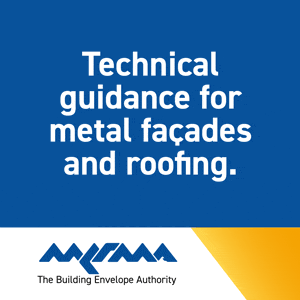The challenge for construction as PFI agreements an end
- Specify & Build
- Oct 24
- 3 min read
As public sector organisations prepare to inherit assets built under PFI agreements, they face a massive challenge. But there is a solution, explains Ryan Donoghue of AJ Digital.
For decades, maintenance and replacement data in the construction industry have been collected in an adhoc, fragmented manner. Under PFI contracts, contractors and maintenance teams have kept records using varied methods and formats, often resulting in incomplete or inconsistent documentation.

As PFI contracts come to an end, these scattered records become a critical liability. As a result, facility managers will likely be forced to piece together a building’s history from a mishmash of paper files, legacy databases and incomplete digital records. Without a unified record, it’s difficult to determine the true state of an asset, potentially leading to unexpected maintenance costs or safety risks. Furthermore, regulatory requirements for safety, energy efficiency and accessibility demand accurate, up-to-date documentation – a goal that’s nearly impossible to achieve with inconsistent records. While the buzz around digital twins has captured attention in recent years, the real challenge is ensuring that every piece of maintenance and replacement data is recorded accurately, consistently and comprehensively. That’s why we need accurate digital O&M records.
Unlike digital twins, which create a virtual replica of a building integrated with live data, a robust digital O&M record system uses a uniform template and consistent terminology to capture every detail of a building’s lifecycle – from initial construction and installation to ongoing maintenance and eventual upgrades. This ensures that, regardless of who collected the data or when it was recorded, the information is coherent, accessible and actionable.
The power of standardisation
Standardisation is at the heart of producing effective digital O&M records. By adopting a standardised template, every maintenance activity – from routine inspections to major repairs – is documented in a consistent format. This helps facility managers to navigate the data easily, compare historical information and identify trends. This reduces the risk of errors and misinterpretations, ensuring that everyone speaks the same language.
With all maintenance information stored in a centralised, standardised system, facility managers can quickly access the data they need to make informed decisions. Whether it’s scheduling preventative maintenance, budgeting for future repairs or planning for renovations, having reliable data at hand is invaluable.
Regulatory bodies also require detailed documentation of maintenance activities to ensure that buildings meet safety, energy and accessibility standards. A digital O&M system that employs standardised templates makes it simple to produce compliance reports, reducing the administrative burden and ensuring that no critical detail is overlooked.
AJ Digital’s range of digital services, for example, are designed to transform fragmented, inconsistent records into a powerful, unified database that drives efficiency and enhances asset performance. The process begins with a thorough audit of all existing maintenance records. Companies like ours work to gather data from various sources – be it paper documents, legacy digital files or scattered databases – and convert them into a standardised digital format. These lay a solid foundation for the entire digital O&M system.
Once the data is standardised, it is possible to implement a digital O&M record system and make it bespoke to each specific need. However, their true value is realised through its continuous use. As new technologies emerge and assets evolve, systems must be flexible enough to incorporate additional features such as laser scanning for accurate condition surveys, or predictive maintenance analytics.
Implementing a standardised digital O&M record system means no more piecing together fragmented records from multiple sources – everything is available in a single, unified database. This allows users to assess the asset’s current condition quickly, identify areas for improvement and make informed decisions about future maintenance needs. A standardised digital O&M system also enables proactive maintenance. By analysing historical data, it is possible to predict when components are likely to fail and schedule preventative measures accordingly. This proactive approach extends the life of assets and also leads to significant cost savings over time by preventing expensive emergency repairs.
.png)























































.png)

